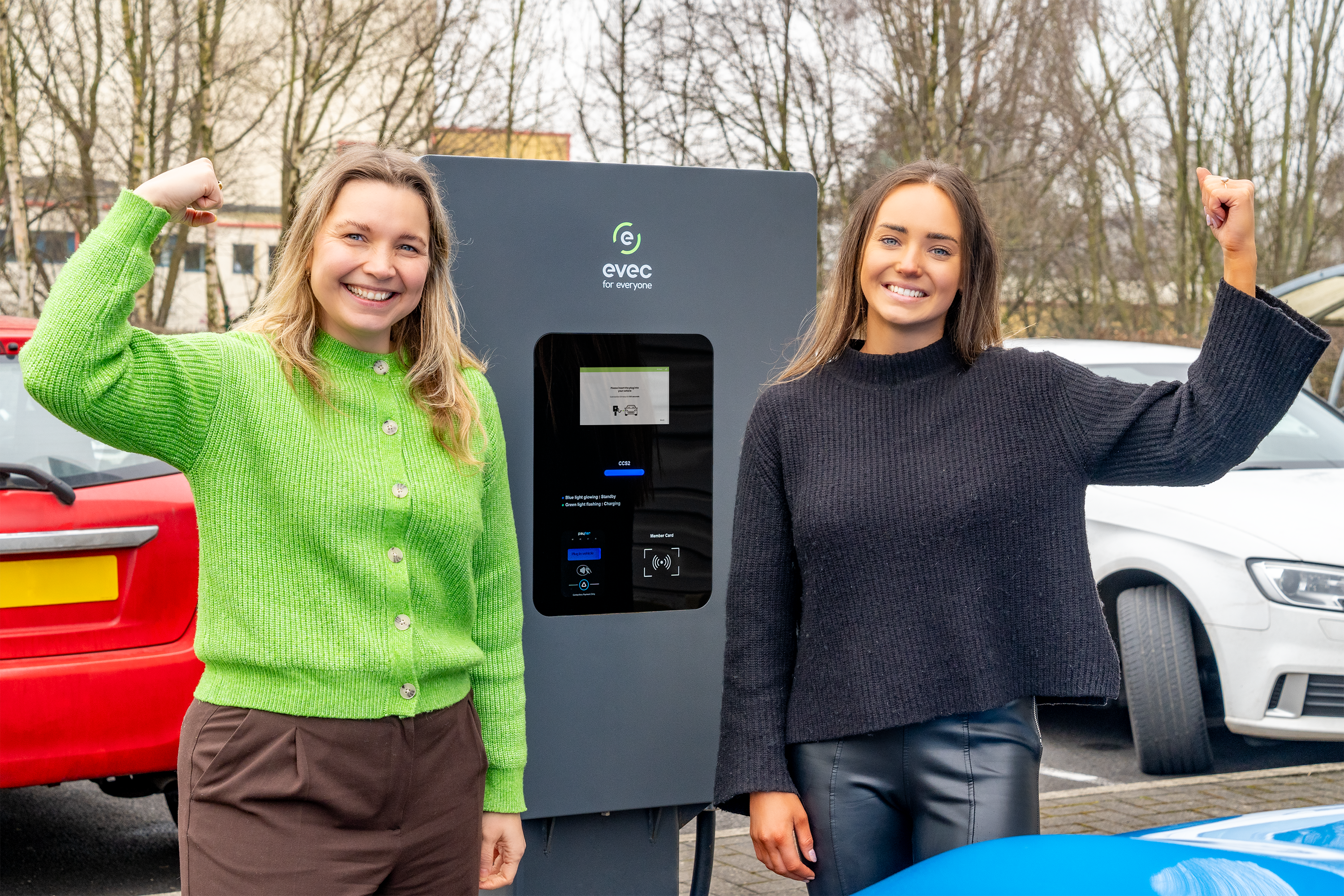International Women’s Day & the EV Gender Gap: What’s Holding Women Back from Going Electric?
Posted by Yolandé Haynes on 6th Mar 2025
Breaking down the gender gap in EV ownership on International Women’s Day
Electric vehicles should be for everyone. But right now, that’s not the reality.
Despite the rapid rise in electric vehicle adoption, just 11% of EV owners identify as women. That’s a staggering gap—especially when EVs offer lower running costs, convenience, and a more sustainable way to drive. So, what’s stopping more women from making the switch?

When is International Women’s Day?
Every year on 8th March, International Women’s Day reminds us to push for progress. And when it comes to EV adoption, progress means accessibility for everyone. But right now, the numbers tell a different story.
EV sales grew 21% year-on-year in 2024, with fully electric cars making up 19.6% of all new car registrations. Yet, knowing that only 11% of these EV owners are women, there’s a clear imbalance that needs addressing.
So, we asked 193 members of our evec community—across different genders, ages, and backgrounds—about their experiences with electric cars. What’s stopping more women from going electric? And more importantly, how can the industry do better?
Here’s what we found:
1. People love driving their electric cars
Our survey found that many drivers were pleasantly surprised by their switch from petrol, finding that many of their initial concerns just aren’t an issue in real life:
“The whole range anxiety concern is irrelevant. After driving for two hours, I need a cuppa and a comfort break. Enough fast chargers now to put another two hours in”
“The cars are much smoother than petrol”
“Battery life doesn’t seem to be much of an issue”
“It’s easier owning an EV as I have a child now”
Electric cars are less expensive to run
Cost is also a big win for EV drivers, with charging being cheaper and more convenient (which we already knew). In fact, the overall cost of running an electric vehicle is 50.2% less than the equivalent cost to run a conventional petrol-driven car over the same period.
“A fifty-mile round trip type of route is virtually free to do.”
“I’ve found the cost of running is 10% that of my old petrol car”
“I love the convenience charging at home”
When charging at home, drivers save both money and time in many cases, making electric vehicles an obvious choice for everyday commuting.
Environmental impact of electric cars
EVs have a smaller carbon footprint than petrol cars, even when factoring in charging. They're also far more energy-efficient—using about 87–91% of battery energy to drive, while petrol cars only convert 16–25% of fuel energy into movement. Over their lifetime, EVs produce fewer emissions than petrol cars, even when considering manufacturing.
“I love it’s green energy”
“The best thing is it’s automatic and the lack of emissions”
“Fun to drive, quiet, no fumes, not having to faff around at petrol stations.”
In summary, the numbers and the voices of our customers both tell the same story: electric cars offer a smoother, more cost-effective, and environmentally friendly driving experience. These real-life benefits are why so many people are switching to driving electric every day.
2. Safety concerns at public charging stations
When we asked our community whether they felt public EV charging was designed with women’s safety in mind, the response was loud and clear:
- 46.6% said they had safety concerns about using public chargers, especially at night.
- 29.8% said they avoided public charging altogether.
And they’re not alone. A study from Keele University found that female EV drivers are more likely to feel apprehensive about using chargers late at night or in poorly lit areas due to fear for their personal safety.
Here’s what some of our respondents had to say:
“Some public charging locations are remote and poorly lit, so it can be unnerving for women.”
“I stress about having to leave the car or stay inside it while charging—it feels unsafe.”
“Charging bays are often tucked away at the back of car parks. At night, that’s not where I want to be.”
This isn’t just a minor inconvenience—it’s a major barrier to EV adoption. If nearly half of women feel unsafe using public chargers, the industry needs to take action.
Better lighting, visible security measures, and more thoughtfully placed charge points must become the norm. No one should have to choose between driving electric and feeling safe.
3. The EV industry still isn’t built for everyone
When we asked our community how well the EV industry considers women’s needs, the results spoke for themselves:
- Average score: 6.6/10
- Only 15% rated it a perfect 10
- Nearly 30% rated it 5 or lower—a clear sign there's work to do
Women aren’t just feeling overlooked—they’re saying it outright. From car design to the charging experience, the industry still leaves many women to navigate an EV world that wasn’t built with them in mind:
“The cables are tricky. The whole automotive industry is aimed towards men.”
“EV chargers aren’t designed with women in mind. DC chargers are heavy, and some require more physical strength to operate.”
Drivers shouldn’t have to struggle with heavy cables or unsafe charging locations just to get from A to B. Yet right now, they’re being asked to do exactly that—sometimes alone, at night, in remote areas. That’s unacceptable.
If we’re serious about hitting 2035 net-zero targets, we need to face a hard truth: it’s not just about switching to electric, but making sure everyone can.
Addressing the gender gap in EV ownership
Our findings mirror a broader industry trends. A 2023 report by Edmunds revealed that 67% of EV purchases were made by men, compared to 33% by women.
This isn’t a coincidence. Women face more barriers to adoption, from concerns about safety at public charging stations to the design of EVs and charging equipment that don’t always account for their needs.
If we want to speed up the EV transition, we need to make sure everyone feels confident making the switch. That means rethinking how we design, market, and roll out EV infrastructure—so it works for real people, in real life.
What evec is doing to change this
We’re not waiting for the industry to catch up. At evec, we’re tackling this issue head-on by designing chargers with real people’s needs in mind and pushing for better, safer, smarter charging infrastructure.
Here are just a few ways our chargers are designed:
- Built-in lighting – Many chargers are installed in dimly lit areas, making night-time charging feel unsafe. That’s why our commercial chargers come with integrated lighting, improving visibility and security.
- Tap-and-pay technology – No one should have to sit in a dark car park faffing with an app just to start a charge. Integrated PAYTER payment terminals make charging quick, simple, and safe.
- Affordability & accessibility – EV adoption shouldn’t be limited by cost or complexity. We design our chargers to be affordable, easy to install, and widely available, so more people can switch to electric with confidence.
But this is bigger than just us. We need businesses, councils, and the wider industry to step up—placing chargers in safer, more accessible locations and ensuring EV ownership works for everyone, not just a select few.
The future of electric vehicles is for everyone. And at evec, we’re making sure of it.
